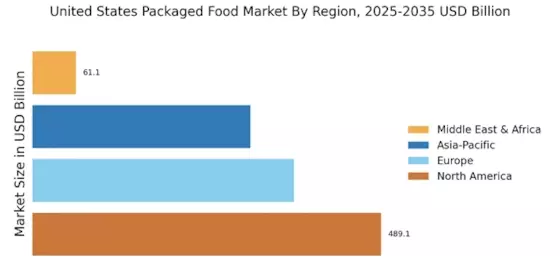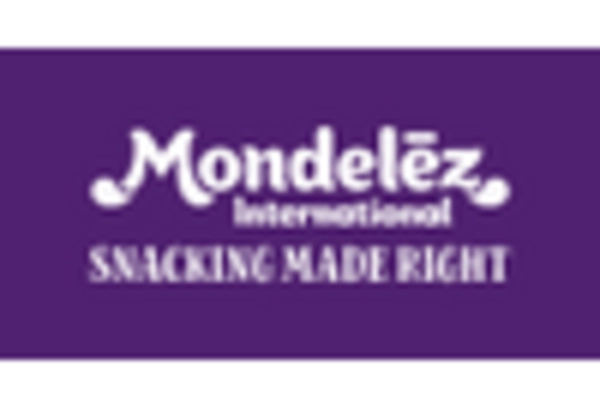Convenience and Time-Saving
The increasing pace of modern life has led to a growing demand for convenience in food options. Consumers are increasingly seeking packaged food products that require minimal preparation time. This trend is particularly evident in the packaged food market, where ready-to-eat meals and snacks are gaining traction. According to recent data, the convenience food segment is projected to grow at a CAGR of approximately 4.5% through 2026. This shift towards convenience is driven by busy lifestyles, with many individuals prioritizing quick meal solutions. As a result, manufacturers in the packaged food market are innovating to create products that cater to this demand, offering a variety of options that are both easy to prepare and consume.
Changing Consumer Preferences
Consumer preferences are evolving, with a noticeable shift towards healthier and more diverse food options. The packaged food market is experiencing a transformation as consumers increasingly seek products that align with their dietary choices, such as plant-based and organic foods. Recent surveys indicate that nearly 30% of consumers are actively looking for healthier alternatives when purchasing packaged foods. This trend is prompting manufacturers to reformulate existing products and introduce new lines that cater to these preferences. The rise of dietary restrictions and the desire for transparency in ingredient sourcing are also influencing purchasing decisions, compelling brands in the packaged food market to adapt their offerings accordingly.
Increased Focus on Food Safety
Food safety remains a paramount concern for consumers, influencing their purchasing decisions in the packaged food market. Recent regulations and standards have heightened the emphasis on safety protocols throughout the supply chain. Consumers are increasingly aware of foodborne illnesses and are seeking products that adhere to stringent safety measures. This trend is reflected in the growing demand for certifications and labels that indicate compliance with safety standards. As a result, manufacturers are investing in quality assurance processes and transparent labeling practices to build consumer trust. The focus on food safety is likely to continue shaping the packaged food market, as consumers prioritize products that ensure their health and well-being.
Technological Advancements in Food Processing
Technological innovations in food processing are significantly impacting the packaged food market. Advances in preservation techniques, such as high-pressure processing and vacuum sealing, are enhancing product shelf life while maintaining quality. These technologies allow manufacturers to offer fresher products with extended usability, appealing to health-conscious consumers. Furthermore, automation in production processes is improving efficiency and reducing costs, which can lead to more competitive pricing in the packaged food market. As these technologies continue to evolve, they are likely to reshape the landscape of food production, enabling companies to meet the growing demand for high-quality packaged foods.
Rising Demand for Ethnic and International Flavors
the market is witnessing a surge in demand for ethnic and international flavors as consumers become more adventurous in their culinary choices. This trend is driven by the increasing diversity of the population and a growing interest in global cuisines. Recent market analysis suggests that products featuring bold flavors and unique ingredients are gaining popularity, with a notable increase in sales of international snacks and meal kits. Manufacturers are responding by expanding their product lines to include a variety of ethnic offerings, catering to the evolving tastes of consumers. This diversification not only enhances the appeal of packaged foods but also reflects a broader cultural shift towards embracing global flavors.


















Leave a Comment